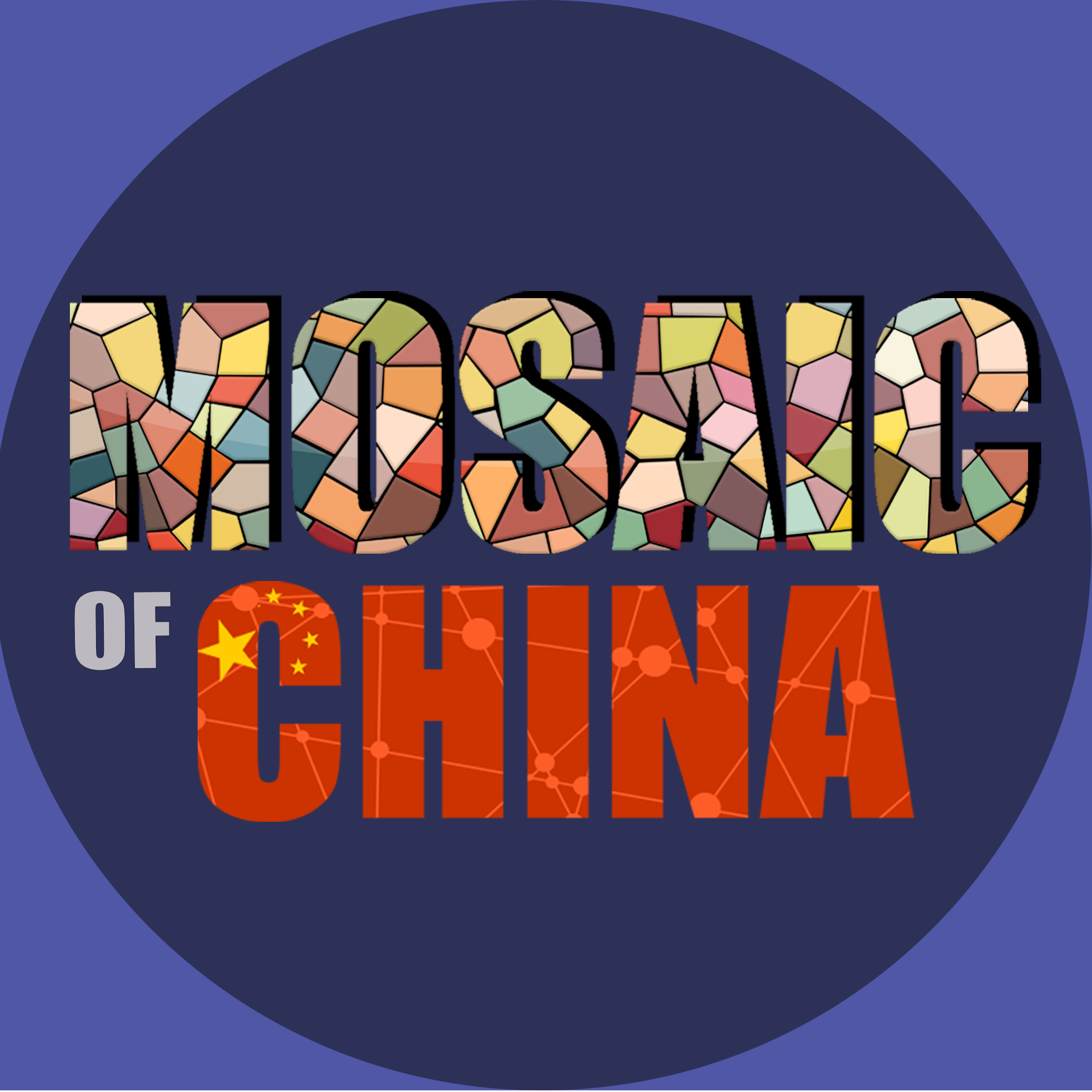Season 03 Episode 05
The details below are for the REGULAR version of this episode. For the PREMIUM version, subscribe on Apple Podcasts, Patreon (outside China) or 爱发电 (in China).
Episode 05: The Rural Architect
CHEN Haoru - Principal Architect, Atelier Chen Haoru
Original Date of Release: 27 Sep 2022.
China is a country of cities, and mega-cities... and mega-mega-cities. But guess what folks, in between these cities is a whole bunch of countryside. And as we question whether our modern urban lifestyles are truly sustainable, sometimes we need to turn to those places where the answers have been waiting for us all along.
Today's guest - the architect, Chen Haoru - has been searching for these answers from his base in 杭州 [Hángzhōu] for the last twenty years. And this journey has led him to establishing a model of communal living, to designing structures that define a philosophical movement, and to questioning our misplaced expectation about the permanence of architecture.
The episode also includes a catch-up interview with Jovana ZHANG from Season 02 Episode 08.
Season 03 is supported by Shanghai Daily - the China news site; Rosetta Stone - the language learning company; naked Retreats - the luxury resorts company; SmartShanghai - the listings and classifieds app; and JustPod - the podcast production company.
To Join the Conversation and Follow The Graphics…
View the Instagram Story Highlight, the LinkedIn Post or the Facebook Album for this episode. Alternatively, follow Mosaic of China on WeChat.
To view the images below on a mobile device, rotate to landscape orientation to see the full image descriptions.
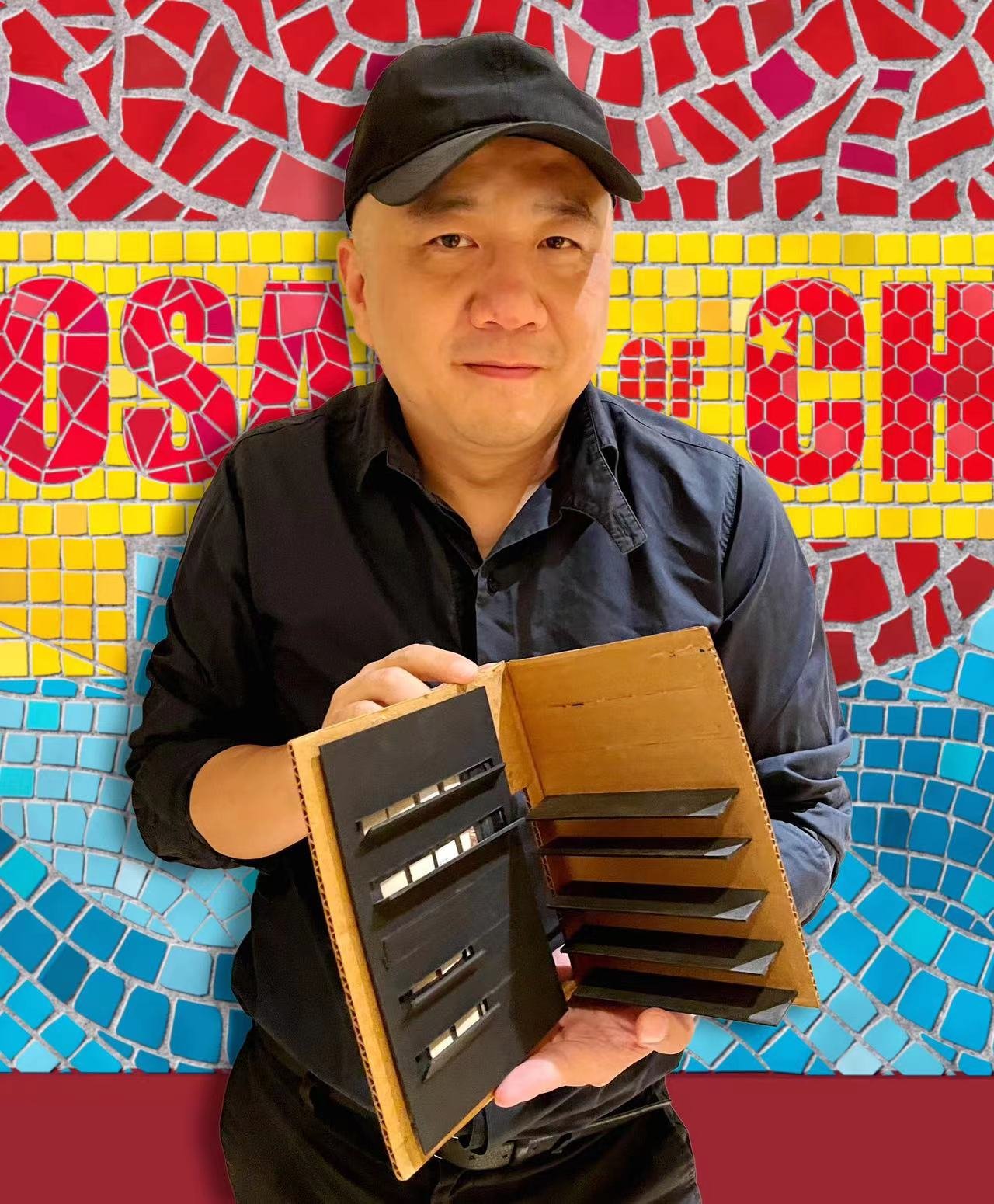
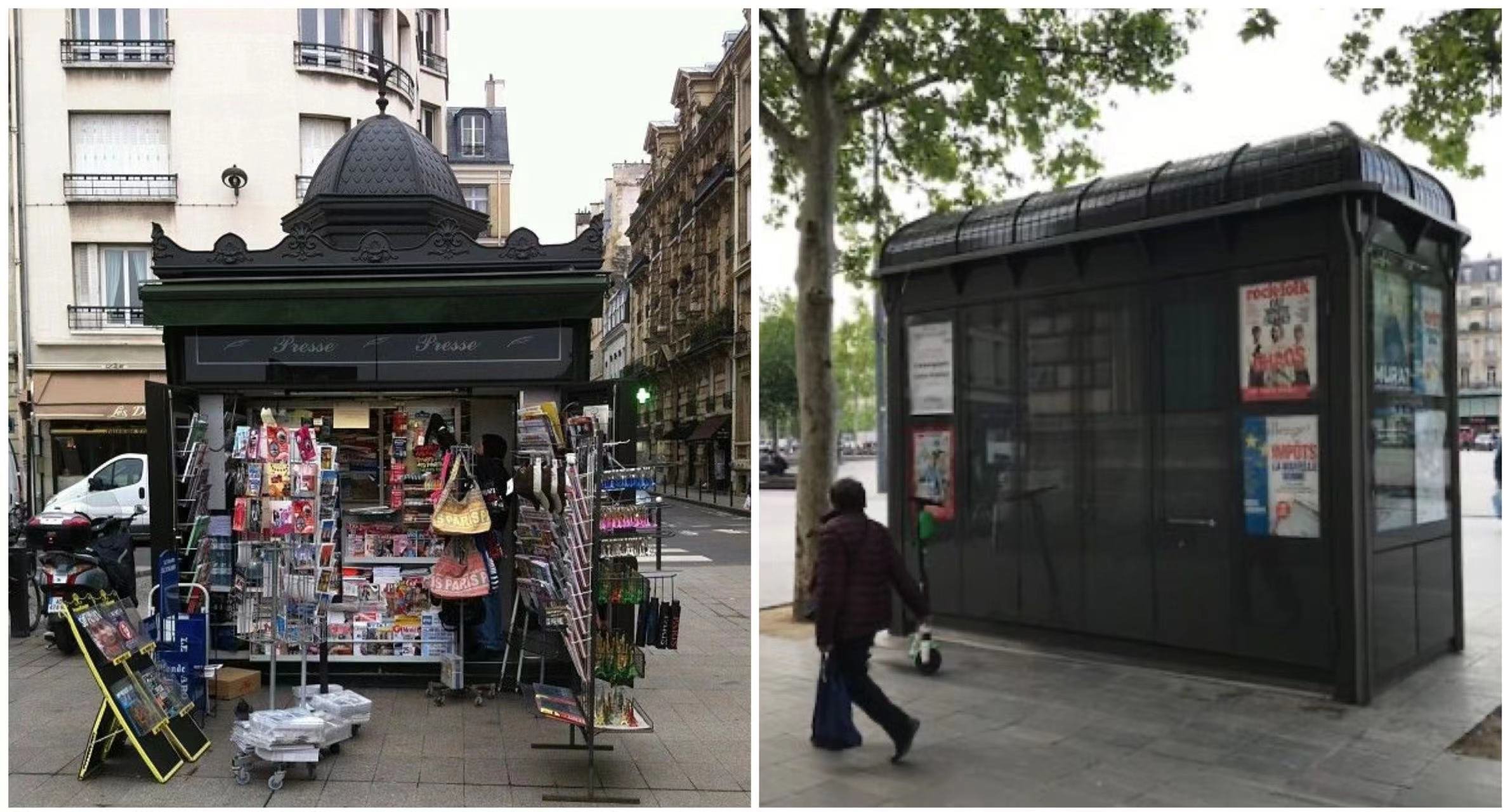
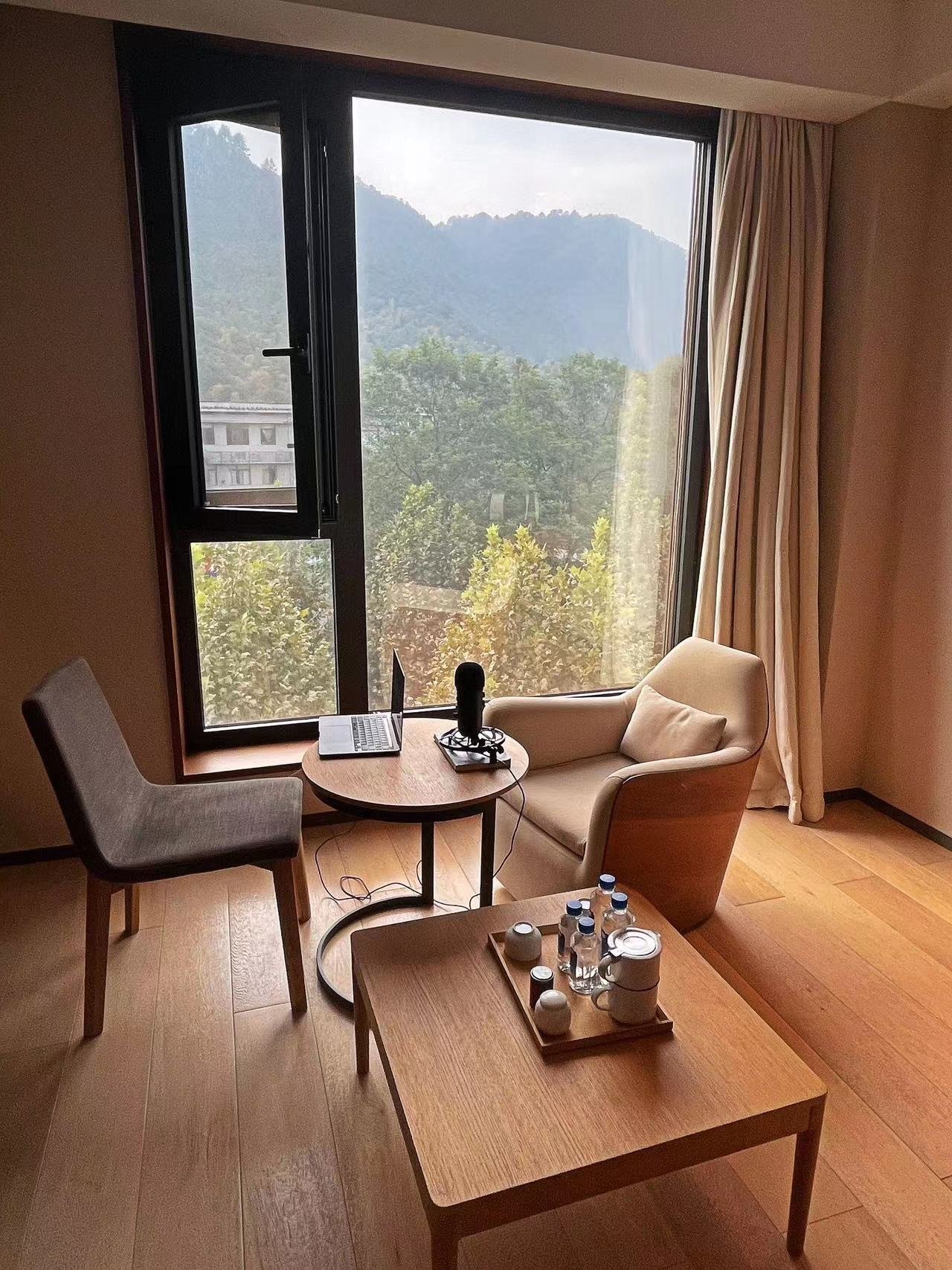
![Chen Haoru: The backdrop of our conversation was the city of 杭州 [Hángzhōu].](https://images.squarespace-cdn.com/content/v1/5d40122274f3720001d9543b/1664024267489-1HO6A90A4BOTE4NH25SN/05+The+backdrop+of+our+conversation+was+the+city+of+%E6%9D%AD%E5%B7%9E+%5BH%C3%A1ngzh%C5%8Du%5D.jpg)
![Chen Haoru: Present-day 杭州 [Hángzhōu] was capital city of the Southern Song Dynasty (1127-1279), when it was known as 臨安 [Lín'ān].](https://images.squarespace-cdn.com/content/v1/5d40122274f3720001d9543b/1664024267853-X46SA4O1EN707683LUJQ/06+Present-day+%E6%9D%AD%E5%B7%9E+%5BH%C3%A1ngzh%C5%8Du%5D+was+capital+city+of+the+Southern+Song+Dynasty+%281127-1279%29%2C+when+it+was+known+as+%E8%87%A8%E5%AE%89+%5BL%C3%ADn%27%C4%81n%5D.jpg)
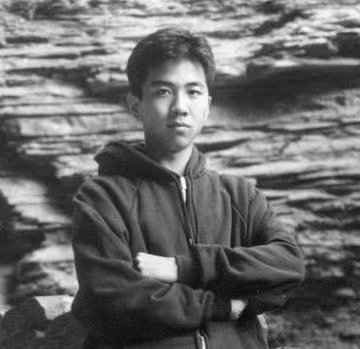
![Chen Haoru: He first recognised the problems of modern construction in China when working on the new area of 滨江 [Bīnjiāng], the project that was behind his relocation back to 杭州 [Hángzhōu].](https://images.squarespace-cdn.com/content/v1/5d40122274f3720001d9543b/1664024268819-ACWJ1AK6GR80L3MALL0O/08+Chen+Haoru+first+recognised+the+problems+of+modern+construction+in+China+when+working+on+the+new+area+of+%E6%BB%A8%E6%B1%9F+%5BB%C4%ABnji%C4%81ng%5D%2C+the+project+that+was+behind+his+relocation+back+to+%E6%9D%AD%E5%B7%9E+%5BH%C3%A1ngzh%C5%8Du%5D.jpg)
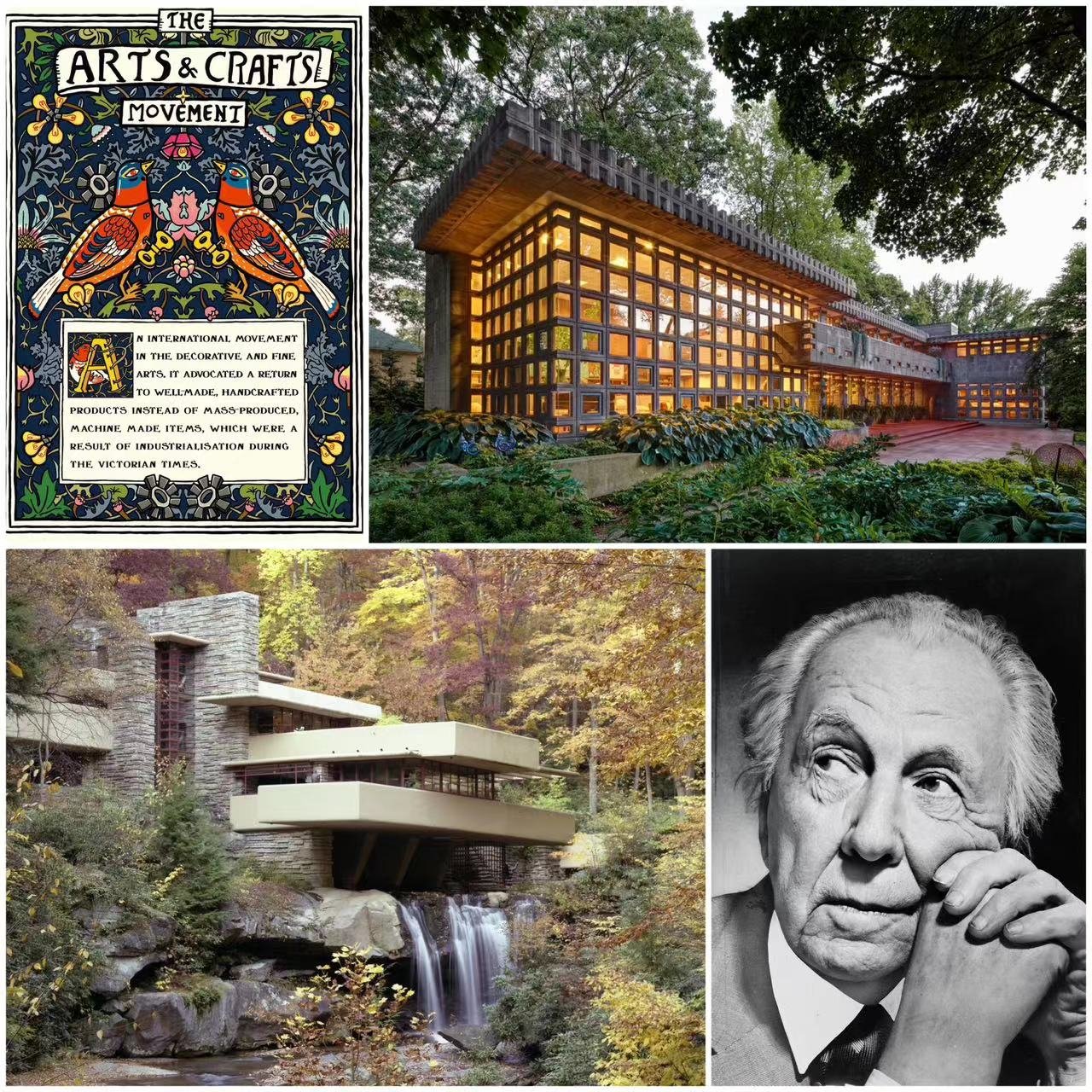
![Chen Haoru: He is a contemporary of another 杭州 [Hángzhōu] resident, the Pritzker Prize winning architect 王澍 [Wáng Shù].](https://images.squarespace-cdn.com/content/v1/5d40122274f3720001d9543b/1664024269634-BTXDMH9WKU0UGKZZJPZS/10+Chen+Haoru+is+a+contemporary+of+another+%E6%9D%AD%E5%B7%9E+%5BH%C3%A1ngzh%C5%8Du%5D+resident%2C+the+Pritzker+Prize+winning+architect+%E7%8E%8B%E6%BE%8D+%5BW%C3%A1ng+Sh%C3%B9%5D.jpg)
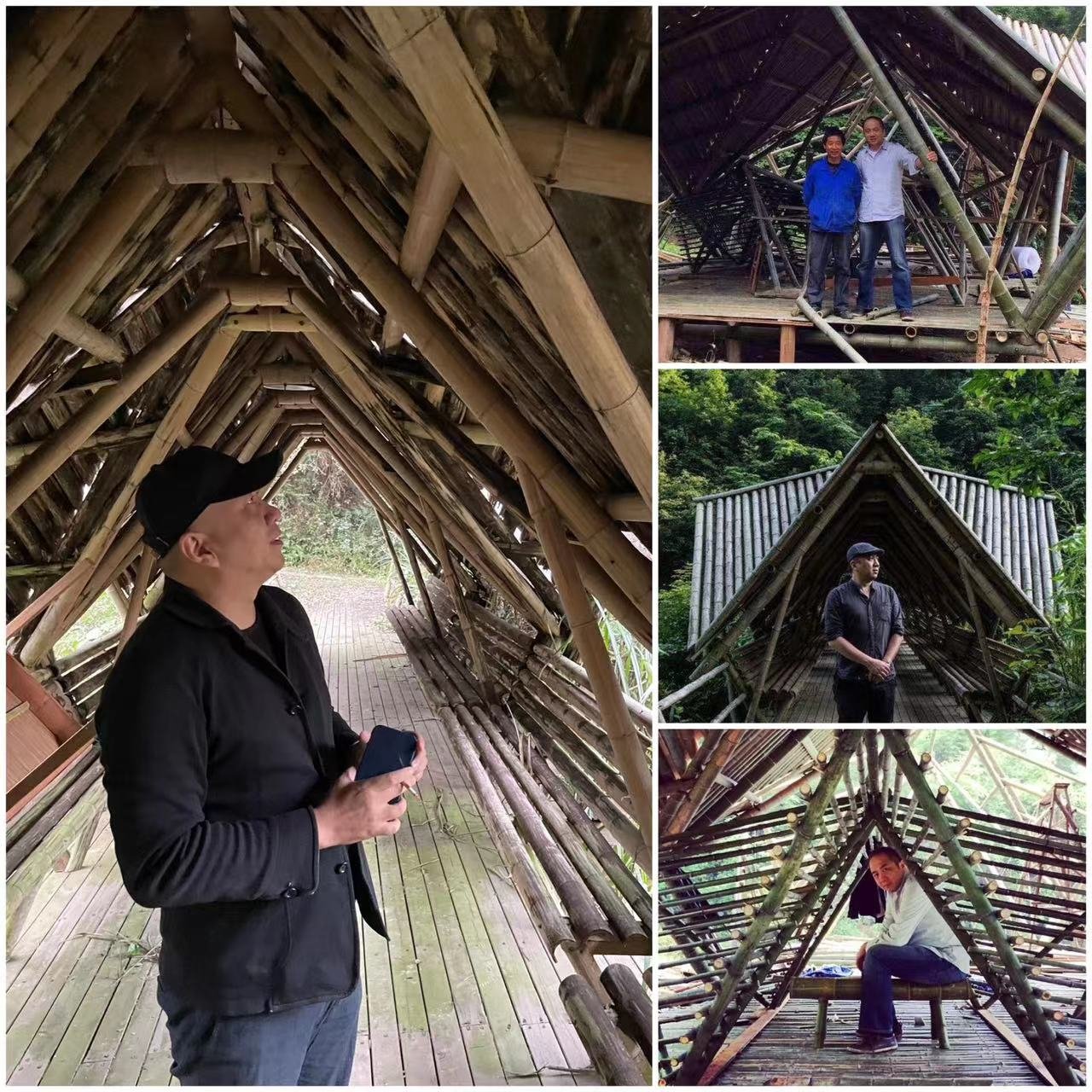
![Chen Haoru: The architectural centrepiece of the 太阳 [Tàiyáng] Commune sustainability project was the pig barn.](https://images.squarespace-cdn.com/content/v1/5d40122274f3720001d9543b/1664024270739-D3LW89X5UNFNQZ3OND76/12+The+architectural+centrepiece+of+the+%E5%A4%AA%E9%98%B3+%5BT%C3%A0iy%C3%A1ng%5D+Commune+sustainability+project+was+the+pig+barn.jpg)
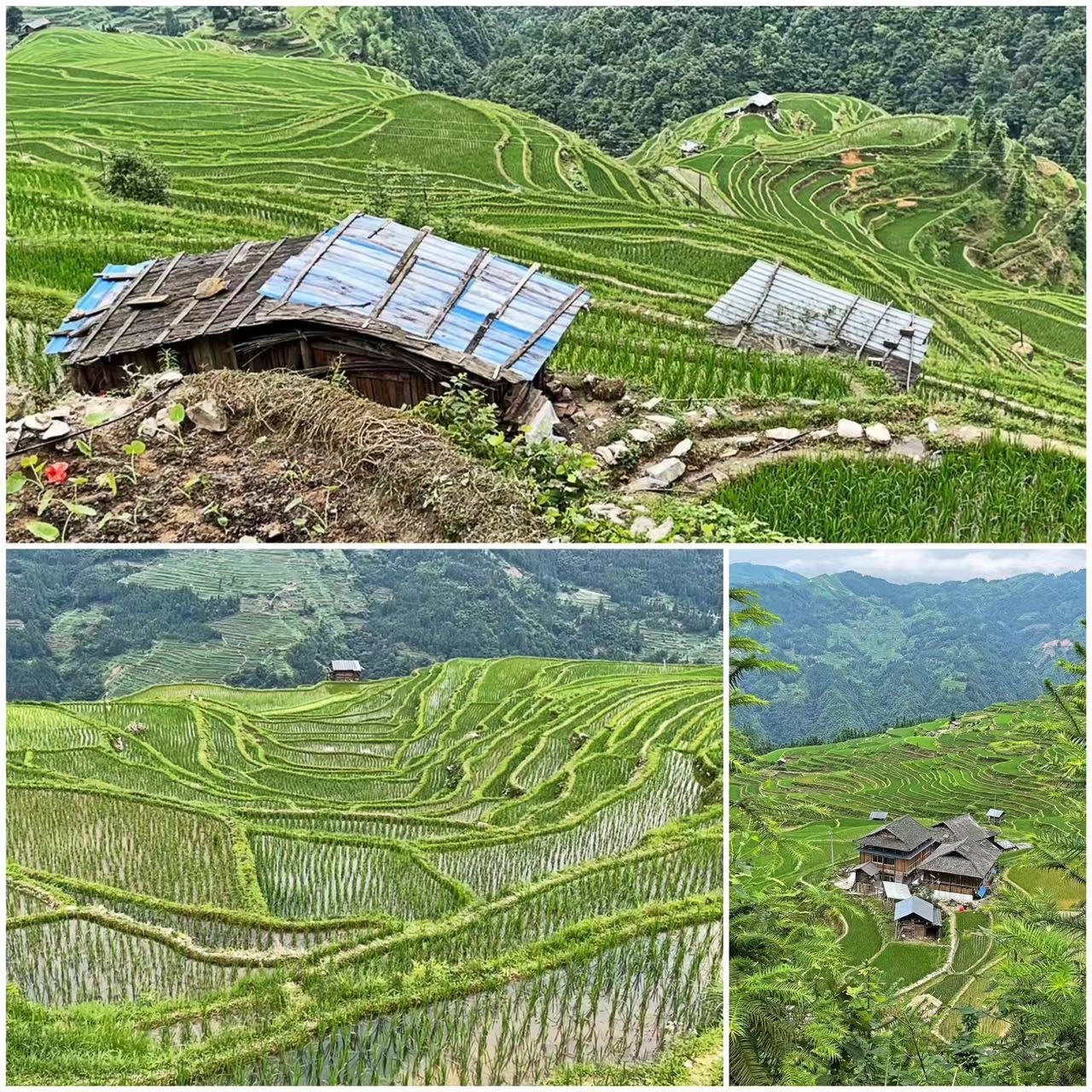
![Chen Haoru: The 太阳 [Tàiyáng] Commune became a focal point for the study of organic architecture across China.](https://images.squarespace-cdn.com/content/v1/5d40122274f3720001d9543b/1664024271748-KCF3335KF2EZ8HHWQIR7/14+The+%E5%A4%AA%E9%98%B3+%5BT%C3%A0iy%C3%A1ng%5D+Commune+became+a+focal+point+for+the+study+of+organic+architecture+across+China.jpg)
![Chen Haoru: The farmers at the 太阳 [Tàiyáng] Commune have personal ownership and pride of their produce.](https://images.squarespace-cdn.com/content/v1/5d40122274f3720001d9543b/1664024272268-7YJKFA5RAGBZR68NUDPR/15+The+farmers+at+the+%E5%A4%AA%E9%98%B3+%5BT%C3%A0iy%C3%A1ng%5D+Commune+have+personal+ownership+and+pride+of+their+produce.jpg)
![Chen Haoru: There has recently been an explosion of new 民宿 [mínsù] guesthouses popping up all over the Chinese countryside.](https://images.squarespace-cdn.com/content/v1/5d40122274f3720001d9543b/1664024272613-LH956OANY8T2WOAVOX2L/16+There+has+recently+been+an+explosion+of+new+%E6%B0%91%E5%AE%BF+%5Bm%C3%ADns%C3%B9%5D+guesthouses+popping+up+all+over+the+Chinese+countryside.jpg)
![Chen Haoru: One of his recent projects is a new youth hostel in rural 安徽 [Ānhuī] Province.](https://images.squarespace-cdn.com/content/v1/5d40122274f3720001d9543b/1664024272967-N0TZQJ113H1SUBGB8EG5/17+One+of+Chen+Haoru%27s+recent+projects+is+a+new+youth+hostel+in+rural+%E5%AE%89%E5%BE%BD+%5B%C4%80nhu%C4%AB%5D+Province.jpg)
![Chen Haoru's favourite place to visit in China: The road from 杭州 [Hángzhōu] to 泉州 [Quánzhōu], including locations like 龙泉 [Lóngquán] which is famous for swords and porcelain.](https://images.squarespace-cdn.com/content/v1/5d40122274f3720001d9543b/1664024273368-1SCMUH25XTW7JZBXH3NW/18+Destination+-+The+road+from+%E6%9D%AD%E5%B7%9E+%5BH%C3%A1ngzh%C5%8Du%5D+to+%E6%B3%89%E5%B7%9E+%5BQu%C3%A1nzh%C5%8Du%5D%2C+including+locations+like+%E9%BE%99%E6%B3%89+%5BL%C3%B3ngqu%C3%A1n%5D+which+is+famous+for+swords+and+porcelain.jpg)
![Chen Haoru's go-to song to sing at KTV: '狼 [Láng]' by 齐秦 [Qí Qín].](https://images.squarespace-cdn.com/content/v1/5d40122274f3720001d9543b/1664024273546-BVFO2VWBZN1A92KASC1M/19+KTV+Song+-+%27%E7%8B%BC+%5BL%C3%A1ng%5D%27+by+%E9%BD%90%E7%A7%A6+%5BQ%C3%AD+Q%C3%ADn%5D.jpg)
![Chen Haoru's top inspiration in China: Solitude Hill - or '孤山 [Gūshān]' - where artists and poets in the 清 [Qīng] Dynasty would go to be alone.](https://images.squarespace-cdn.com/content/v1/5d40122274f3720001d9543b/1664024274215-K49IQG9W335E0P1A1QLB/20+Inspiration+-+Solitude+Hill+-+or+%27%E5%AD%A4%E5%B1%B1+%5BG%C5%ABsh%C4%81n%5D%27+-+where+artists+and+poets+in+the+%E6%B8%85+%5BQ%C4%ABng%5D+Dynasty+would+go+to+be+alone.jpg)
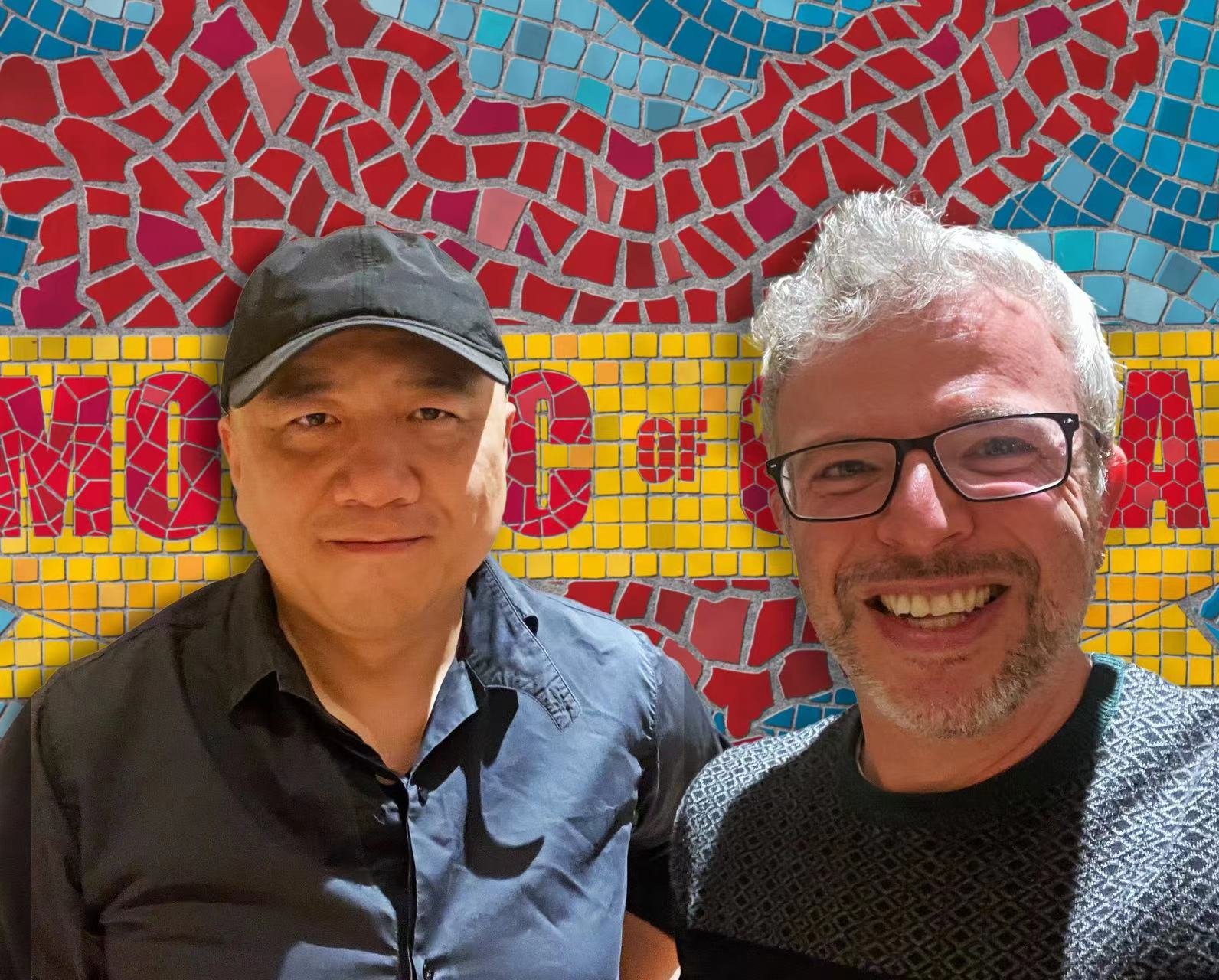
To Listen Here…
Click the ▷ button below:
To Listen/Subscribe Elsewhere…
1) Click the link to this episode on one of these well-known platforms:
2) Or on one of these China-based platforms:
To Read The Transcript…
[Trailer]
CH: So at that time we realised “OK, architecture is part of agriculture”.
OF: Nice.
[Intro]
OF: Welcome to Mosaic of China, a podcast about people who are making their mark in China. I’m your host, Oscar Fuchs.
Today’s episode is with the architect 陈浩如 Chén Hàorú. We’ve had an architect on the podcast before, it was the lovely Wendy Saunders from Season 02 Episode 12. So I was a bit nervous about having another one on the show, since I was wondering whether there would be too much overlap. But as you’ll hear, there is absolutely no overlap at all! That’s not to say that Haoru and Wendy are totally opposite, in many ways they’re not. But Wendy’s story was about bringing her European eye to China, and we talked a lot about the evolution of the built environment in Shanghai. With Haoru, we’re talking about someone with a Chinese and American eye, working in entirely different environments, and with an overarching philosophy that challenges our ideas of permanence and architectural identity.
Indeed, what sets Haoru’s story apart from almost all the other episodes of Mosaic of China, is that we’re not just talking about growing a business, we’re talking about growing a movement. One that has taken Haoru from the streets of New York to a pig farm in 浙江 [Zhèjiāng] Province. We recorded this conversation in a hotel room with too many reflective surfaces, so the resulting audio is a little echoey. Your ears should tune into this quickly enough, but if you do have any trouble understanding then please follow the transcript on the Mosaic of China website, or watch the video with captions on YouTube.
[Part 1]
OF: Well, thank you so much for coming. We are currently in a hotel room in 杭州 [Hángzhōu] and I am with 陈浩如 Chén Hàorú. Hello Haoru.
CH: Hello.
OF: I have been doing a few of these interviews outside of Shanghai. Which is nice, because a lot of the previous two seasons have been very Shanghai-based. And it's fun for me, because the city itself becomes almost like an extra guest in the show. So before we jump into our conversation, how long have you been here in 杭州 [Hángzhōu]?
CH: Well, it's a good question. I was born here in the 70s. Then I went to the U.S, New York. I was there about 15 years, and then I came back in the year 2000/2001. You know, I would go back to New York, and come back here; go to Shanghai or go to Beijing; and go to Europe for exhibitions and come back. There was not a clear definition of which city that I actually live In, I used to live in multiple cities. That was the previous life we used to have.
OF: Right, now with COVID, the luxury of saying that you are based in multiple locations is no longer available, right?
CH: Yes, we're sort of forced to choose.
OF: Yes.
CH: Sort of stuck in one place.
OF: Yes.
OF: But there are worse places to be stuck in. I think 杭州 [Hángzhōu] is a really beautiful city. And presumably, when you came back from the U.S, that's what you had in mind as well, right?
CH: It was very peaceful around the year 2000/2001. 杭州 [Hángzhōu] was considered a backwater, or ‘内地 [nèidì]’. The city really goes around the West Lake. It's a very unique situation. Because usually we see a central park, but 杭州 [Hángzhōu] is a city that was built around a lake.
OF: Yes.
CH: But 杭州 [Hángzhōu] in a sense was kind of insignificant. It was the capital once, about a thousand years ago - in the 宋 [Sòng] Dynasty, when basically they were forced to relocate to 杭州 [Hángzhōu] - but after that, it’s been sort of a romantic place for people who are wandering around, and have no sense of belonging, or are sort of depressed. Depressed politicians, poets, artists. It's a place to be tucked away.
OF: You know what, I've heard of that. Like, in the 1900s, when people were getting tired of how China was modernising, they would escape to 杭州 [Hángzhōu] and become Buddhist monks, wouldn't they?
CH: Yes, that was about 100 years ago. And then some people stayed. They would rather be here in this perpetual holiday.
OF: Well, I said that the city we're in will become like an extra guest of this show. I think it's almost to a fault, because we've talked about 杭州 [Hángzhōu] and I haven't really talked about you at all. Briefly, what do you do here in 杭州 [Hángzhōu], Haoru?
CH: I'm an architect by profession. That's how I came back to 杭州 [Hángzhōu] from New York, because I actually received a commission here.
OF: Great. Well, before we go any further, what is the object that you have brought that in some way describes your life here in China? What do we have here?
CH: It's a model of a bookshelf.
OF: Oh nice.
CH: This is from years ago, I made this in college. It's what got me into the profession of architecture. It's a kiosk to sell newspapers and magazines.
OF: Oh that's what you mean. Right, right, right.
CH: Yeah. You see interesting bookstands in Paris.
OF: Yes. That's what I'm thinking of when you say that.
CH You go there and it opens up. And it's street life. At night, it just closes off and becomes a fortress.
OF: That's right, yeah.
CH: That’s a great idea, because then books no longer belongs to one person. They’re shared with the city.
OF: So this was designed to be a free-standing structure in the middle of the street, which would open up and become a temporary bookstore in the daytime, and then would shut in the evening.
CH: Yes. But you can see other creative bookstore design or bookstand designs.
OF: Yes.
CH: Not only in Paris, all over Europe. I saw something very interesting in Tokyo recently.
OF: You were ahead of your time, maybe.
CH: I always feel that. I feel ten or twenty years ahead of my time. I came back a little bit too early. Now is probably a better time.
OF: Yeah.
CH: 杭州 [Hángzhōu] has become a boom city. Hotels, and Alibaba…
OF: Yeah, where we are doing the recording is in a hotel right next door to one of Alibaba’s big offices, right?
CH: That was built three years ago. Before that this place was very quiet.
OF: And so presumably, you studied architecture in New York. That was the America side of your story.
CH: Yes, I studied engineering, I studied liberal arts, then I found architecture. Then I stuck with it. Mostly, I spent my time in New York City: schools in Harlem, schools in Brooklyn, and in The Village. This environment that cultivated designers, artists…
OF: …And I would say non-conformist thinkers, right? In that part of New York.
CH: Very different from the rest of America.
OF: Right.
CH: The crossroads of the world are Broadway and 42nd Street. Always a sense of optimism.
OF: So you said you received a commission.
CH: I received a commission, yes. The first commission was about making a new city, it was a bank of the river. And there was nothing there. That's 滨江 [Bīnjiāng], That's where the huge towers are now. We contributed a part of that. But we found there are problems in the way we are proceeding with this. One of them is, I saw the construction workers - we had hundreds of construction workers - they were quite skilled with their hands. They would use tools and cement, and tried to make something so straight, that it mimics prefabricated industrial units. We see this everywhere. People use handcraft to mimic an industrial-era product.
OF: And that results in a bad product, right? Because if you're trying to mimic something which is machine-based, the result is going to be lesser.
CH: It was also sad. Because we know how good they are, what great crafts they can produce with their hands. Yet we're doing something that was designed to make it faster, cheaper and mass-produced. Trying to catch up, trying to be modern. But people are paying a huge price for it. Then I realised maybe we have two ways of doing this. One is to industrialise and develop progressively. But there's always a parallel movement of people going to the countryside. The Arts and Crafts movement in the UK. In America as well, Frank Lloyd Wright, going against the machine of modernism. And in China, I saw this coming. I saw 王澍 [Wáng Shù]’s work right after I got here.
OF: So 王澍 [Wáng Shù], he is someone who most Chinese people would have heard of, but maybe if you're not Chinese you may not know, right? Who is 王澍 [Wáng Shù]?
CH: 王澍 [Wáng Shù] is very famous now. In 2012 he won the Pritzker Prize for architecture, that’s the equivalent of the Nobel Prize. He is an architect, now he's the dean of the school where I teach. And his work is very much based in regional material and climate. I saw his work - his effort - as being this parallel movement, more sensitive towards localism, equality issues. When something’s demolished, what do you do with the demolished material? He put it in his walls, as a statement. So when 王澍 [Wáng Shù] invited me to go teach in 2004, he was starting a school, and I knew what he was thinking, so I said “Yes”. It was a lot of free thinking and experimentation, I was able to think about a social and artistic movement. And thinking back, that was a very exciting time. I found a pool of great people, great talents, and I was happy to be part of them.
OF: Yeah. So let's go into some detail. We talked about how you had this idea. So what did you end up doing?
CH: 2012 was a very important year. From that year, we started receiving commissions from the countryside. Society had somewhat changed. There was increasing amount of attention being paid towards the countryside. We did our first project the next year: the 太阳 [Tàiyáng] Commune project.
OF: Right. We're starting to get into territory that overlaps with the person who referred you, Jovana Zhang. So let me play you something now.
[Start of Audio Clip]
Jovana ZHANG: I am suggesting that you talk with Haoru. He is an architect, he’s based in 杭州 [Hángzhōu]. He's doing a lot of things that involve bamboo structure. I think he has a lot of things to say about the architecture of China.
[End of Audio Clip]
CH: Thank you, Jovana.
OF: Tell me what your relationship was with Jovana, how do you know her?
CH: In 2011, I went to a meeting about a show somewhere. They invited architects and handicraft designers. I met Jovana, I met the whole gang. And I thought “Great, this was the 杭州 [Hángzhōu] Art and Crafts revolution”. I thought “Great, I want to be part of that”. Then we went on to do shows, exhibitions. We went to Milan Design Week, our show was called called ‘Handmade In Hangzhou, First Material: Bamboo’. And this exhibition was so popular, they moved the exhibition to Paris, to The Louvre. So it was like an instant hit.
OF: This is what connects us to the project you just started to mention, right?
CH: Yes, I joined this exhibition partially because of this very interesting material, bamboo. Architecture is supposed to last a hundred years. The permanency issue of architecture was without question, until it comes to bamboo. In Japan, they put two temples side by side. You would tear one down, and use the other one, and then you switched. Everything is in a constant demolition and reconstruction process. These temples are so unique and influential in the history of architecture, that it just challenges the permanency idea of architecture. It's always under perpetual reconstruction and maintenance.
OF: Yes. Which in itself is a challenging idea when it comes to architecture from a modern perspective, where we think about building these massive steel and glass structures that look like they're permanent forever and ever.
CH: As an architect, we know that is not true. Because very frequently, the building gets knocked down in 20 years. That is the problem, I think. But in the countryside, we were able to experiment with this idea of ‘temporariness’ - you know, this organic quality of bamboo - with different structures, other than structures for humans to live. We came up with these countryside reconstruction projects, like one of my friends 陈卫 [Chén Wèi] - who knew what I was into - had offered me a chance to design.
OF: Right. And this is what became known as the 太阳 [Tàiyáng] Commune.
CH: That's right. 太阳 [Tàiyáng] is a town name. And it was a bit far from the city, where the land is quite cheap. So my friend 陈卫 [Chén Wèi] was able to rent a few acres of semi-abandoned land. And he wanted to create a farm for raising pigs.
OF: Pigs, right.
CH: Because that was the only sustainable farming trade that wouldn’t lose your investment.
OF: Oh, so it was like a guaranteed income idea.
CH: It was an income idea. But it was really a problem, because all the villagers were against it. Because pig barns are notorious for smells.
OF: Right.
CH: So the challenge was very interesting. We were to create a structure for raising pigs, but it needed to have positive reviews, and could have even visitors. So we had about three months preparation. We had meetings with pig farmers, they came to our office and we learned about the possibilities of what you can do, what's not to do. Then I talked to my client about using bamboo. 陈卫 [Chén Wèi] was very open minded, and said “OK, try it. Do it”. And we created this design, a very durable and simple structure using a five-pyramid scheme, and covering the structure with straw. The math worked out, the client was happy. Then we had to be there to supervise it, to make sure that it was done correctly. It was just perfect. We wanted it to last at least three years. If it lasted three years, we'd know if the farm was a success or failure. So at that time we realised “OK, architecture is part of agriculture”.
OF: Nice. I see.
CH: The solution is within agriculture. You've got rice paddies, you see these beautiful stone-stacked pathways. Who did it? It was the farmers. One of the main work for farmers is to do infrastructure.
OF: Right, which you would also say is ‘design,’ it’s ‘architecture’.
CH: That is part of architecture. That's foundation. This foundation for the rice paddies would continue and form the foundation for village houses.
OF: Yes, they interconnect, right?
CH: Absolutely. Everything’s connected. You're in the valley, nothing comes from the outside, everything’s from here, then you just have to assemble them together. That is, to me, the essence of agriculture. That's how we're meant to survive.
OF: Maybe I should ask you about the project itself. We've talked about the architecture side, what was this idea of the commune?
CH: It started with the idea of a pig farm. It became quite well known, you know “What is this huge pig farm that doesn't smell too bad?” So we did our job quite well. Architecture became the media object that everybody talked about. And from the creation of this architecture, the farm had an identity. People came here to see the pigs, feed the pigs, as many as 50,000 people visited our farm in the first year.
OF: Oh wow.
CH: So in this process, we decided to enlarge the scope. We made as many as 55 different variations of vegetables, expanded the animal farm to include chicken, duck, sheep, goat. And we brought in more people, so it became an experimental education ground for rural construction.
OF: Which is interesting to me, because you could have the idea of a commune growing organic food. But then without having the symbol of the pig farm - without having this architectural identity - it doesn't become anything. It was the architectural piece that grabbed people's attention, which then led them to the actual of what you were trying to do.
CH: Yes, it was first time for me that I felt architecture was powerful. This ability that we have that creates identity - a place - within the continuous rural space. The farmers are proud to be the producers of good food, they have their photo put on the product.
OF: Oh so ‘this person’ created ‘this product’.
CH: Yes, with pride. There are many farms which did similar things before, in Japan and Taiwan. We learned from them. But architecture-wise, it goes back to Arizona. There's this tradition in the U.S, where you go somewhere and create your own universe, your own order. So at the time, it felt very much like that, in the commune. That we're doing something new. There were people coming every day, we had a lot of volunteers, and made our clients very happy. It developed into almost like a career.
OF: The way you talk about it, you didn't just design and build this pig barn, you almost became part of this project yourself, right?
CH: Yeah, I was a part of the project from very beginning. That was the understanding, to supervise or help with the management, and the marketing of the farm.
OF: Oh wow.
CH: We went to as many as 50-100 exhibitions - conferences, talks - of course, about using organic architecture. Architecture doesn't need to be permanent. Architecture doesn't have to be wasteful of energy, or it doesn't have to be destructive to the environment. Even now we're doing these exhibitions. People call me to ask me to create a new farm somewhere, out in the west in 新疆 [Xīnjiāng], it was just overwhelming.
OF: Well that's what I wanted to ask you about. Because we're talking about this one project, which started almost a decade ago. What was the knock on effect? Have you now built a practice based on that project?
CH: I had never thought of doing this commercially. I've never thought to become a CEO of a huge firm, who does this thing and that thing. Because it started with such an anti-establishment, anti-urban culture. Myself, I don't think this really works with this sort of centralised planning strategy. I think it would remain a movement, done by everyone, everywhere.
OF: Organic, right? It would spread organically.
CH: Yes. And it happens. You see the 民宿 [mínsù] movement, right? These boutique hotels, there are perfect in using architecture - using design - to awaken one area.
OF: That's exactly what you make me think about. Little guest houses that I see popping up in the countryside all over China. You build a nice 民宿 [mínsù] - a nice guest house - and then it attracts people who then can revitalise an otherwise ignored small village, right?
CH: You know, I got this wake-up call. In Switzerland, I went to see the works of great masters in the mountains. In the city, you see all this architecture thrown together. And yet individually, they are so insignificant. It doesn’t matter how great the architect, how beautiful the material, you’re just one piece of the city. Everybody just sort of compromises, you know, they fight each other. But some architects have this dream to do more. Architectural becomes part of the landscape, it defines the place. We just have to plan it smartly.
OF: Is this what you're working on, these days?
CH: I am working on a youth hostel in the rural area of 安徽 [Ānhuī] Province, near 黄山 [Huángshān] surrounded by beautiful scenery. The place has no people. So to do anything is impossible, for construction. Of course you couldn’t find workers for restaurants. Nobody, right? So could this be reversed?
OF: Right, so this youth hostel, you build the identity, and then young people can come back and revitalise an otherwise ignored part of the country.
CH: Yes, we're trying to use architecture again.
OF: Yes.
CH: So that young people would want to go.
OF: The young people who go there will then post it on their social media, and hopefully that will have a knock-on effect with other people going,
CH: It just accelerates things. Originally we were thinking it’ll take maybe five years, this movement. Maybe it’ll take five months, if what you do is correct. If I do it correctly, I wouldn't need to promote my own work.
OF: Others will do it for you.
CH: Yeah, they will find a better angle to tell them the story. Then it becomes really interesting.
OF: Well, we started our conversation talking about 杭州 [Hángzhōu], why don't we finish this part and say “Where do you see the city going in the future?”
CH: The city is still changing. Maybe we will have a new city centre in the West. They're building the tallest building in 杭州 [Hángzhōu] there. A giant train station that connects the west and north, where Alibaba is. And in the south - where we are - they are creating this new region, maybe the provincial capital will be moved here. I think the city will be transformed. West Lake will be indeed the Central Park. For 杭州 [Hángzhōu] it used to be ‘nature surrounds man’. Now it's truly ‘man surrounds nature’.
OF: Mmm. This city is going to be more and more on the map in the future.
CH: Yeah.
OF: If the 杭州 [Hángzhōu] government wants to sponsor this episode, they're more than welcome. Thank you so much, Haoru.
CH: Thank you.
OF: We'll move on to Part 2.
[Part 2]
OF: OK, Part 2. I ask the same 10 questions to every guest. Question 1, brought to us by Shanghai Daily: What is your favourite China-related fact?
CH: Well I’ll talk about my profession, different regions have different architects. Shanghai architects are definitely more urban, boutique, trendy, diverse. For 杭州 [Hángzhōu], maybe it's a bit more uniform. The small studios are very much associated with schools, and the topics are more related to culture, environment, nature, crafts. With 云南 [Yúnnán], it's about 远方 [Yuǎnfāng]: ‘Faraway’ architecture. It's much more rural, it’s highly personal, and architects love to go there. Most of them are not from 云南 [Yúnnán]. Most of China sees 云南 [Yúnnán] as this getaway place.
OF: Yes.
CH: And if you go to 广州 [Guǎngzhōu], they have a very strong southern tradition, being a very different climate. The colour, materials, are all very different, very unique. More colourful, more lively. China’s so big…
OF: Yeah, that's a little taster of the different architectural styles. Thank you. Question 2, which comes to us from the language learning company, Rosetta Stone: Do you have a favourite word or phrase in Chinese?
CH: Wow. I’ll say ‘liberation’ right: 解放 [Jiěfàng]. Please, you know, lift the blockade!
OF: Yes. 解放 [Jiěfàng] is a good answer. Question 3, what is your favourite destination within China?
CH: I have to say, if you drive, you can actually go into the mountains without much danger. You know, one of the first places from where we are - the 杭州 [Hángzhōu] or Shanghai area - is to go to the Southwest. I did that recently.
OF: In 浙江 [Zhèjiāng] Province still, right?
CH: It starts in 浙江 [Zhèjiāng], and then 福建 [Fújiàn]. We went to a lot of villages in these areas, like 龙泉 [Lóngquán].
OF: 龙泉 [Lóngquán], oh.
CH: Yeah, ‘Dragon Spring’, where you will find ceramics for tea. And they make swords.
OF: Oh, right.
CH: Yeah. Why would they make them there? If you go there, you'll find out. They’re in the mountains, but they're connected through water to 杭州 [Hángzhōu] and 泉州 [Quánzhōu]. So this road from 杭州 [Hángzhōu] to 泉州 [Quánzhōu] is very interesting. On this road, you find countless beautiful villages and bridges we call 廊桥 [lángqiáo]: This endless roadway of China.
OF: There's a nice connection also with the Mosaic of China, because in Season 01 a couple of people said 杭州 [Hángzhōu] was their favourite destination, including Astrid Poghosyan, the violinist. And last season - Season 02 - there was an improvisational comedian called Michelle Qu, and she chose 泉州 [Quánzhōu] as her favourite destination. So 龙泉 [Lóngquán] is right in the middle of those two.
CH: Yeah, if you go there, it's just very lively. It's different from the northwest.
OF: Nice, thank you so much. Next question, if you left China, what would you miss the most and what would you miss the least?
CH: It's about freedom. In China, you're free to do many things. You basically travel between regions. So it's this kind of variety and freedom to travel within the borders, it’s kinda good. What I’ll miss the least: China is still kind of closed-border. The great wall of fire.
OF: The Great Firewall?
CH: Yeah, the Great Firewall. That's the thing I’d miss the least.
OF: Yeah.
CH: I think that's terrible.
OF: Well said. Next question, is there anything that still surprises you about life in China?
CH: It's how fast it changes. That is really frightening and surprising. Every field is changing. So it makes me wonder, do we age well in such a society?
OF: Yeah. What about in your field? What is changing the fastest in the world of architecture?
CH: New projects keep on popping up in the countryside. New architects, new places, new people. I didn't expect it to be so soon, maybe time passed a little too fast. We can't keep up with it.
OF: Now when I go around the countryside, I do see things that have been made by architectural firms from Beijing from Shanghai.
CH: Yes.
OF: There are now a lot of people who are trying to do the same thing you are doing, right? In the countryside.
CH: Yeah, we're running into each other. It’s good because it fosters competition that creates the environment that you're working towards a similar goal. The countryside’s more open, I think.
OF: There's more room for experimentation.
CH: Oh, definitely. Yeah, the urban sites, they are more competitive.
OF: The next question, which comes to us from SmartShanghai: Where is your favourite place to go out, to eat, or drink, or just hang out?
CH: In the place where I'm working now, 遂昌 [Suìchāng], there is a restaurant where you can have all these unique foods from the countryside. You've probably never seen it anywhere else. They put herbal plants in every course of the meal.
OF: Oh.
CH: It’s quite good. But what's interesting is you get to have the meal while watching the theatre.
OF: Oh, really?
CH: Yeah, the place is known for the creator of many dramas called 汤显祖 [Tāng Xiǎnzǔ], Supposedly he wrote all his dramas in this town. To celebrate him, they create theatres for the restaurants, and that has become a tradition.
OF: And so there's more than one of these places in this town.
CH: Yes. I find that to be two worlds put together.
OF: Yeah.
CH: You just have to go there.
OF: Very unique, thank you.
CH: Very rural.
OF: That's on brand for you, right? What is the best or worst purchase you have made recently in China?
CH: Oh, can I say something that I didn't buy?
OF: Mmm, go on…
CH: Yeah, I'm looking to buy an electric car. That is something that I might have to get.
OF: Yeah.
CH: Because we're in a city where they’ve posted restrictions on normal cars, gas cars. So that kind of restriction is making everybody buy electric cars.
OF: Why haven't you bought one already?
CH: I didn't buy one, because the choices, they’re so baffling. There are so many. But that is definitely something that's coming towards us.
OF: Well, there'll be a delay between this recording and when it is released. So maybe by the time it's released, you would have already bought it.
CH: Maybe.
OF: Maybe, right. Next question, what’s your favourite WeChat sticker? Oh, nice. Can you explain this one
CH: Yes, it’s an algorithm. It's basically a calculated movement of an insect.
OF: Nice. It's so simple, but it's quite hypnotic.
CH: Yes.
OF: And next question, what is your go-to song to sing at KTV?
CH: Maybe a Taiwanese singer, 齐秦 [Qí Qín]: '北方的狼 [Běifāng de Láng]’. ‘Wolf from the North.’
OF: Oh, nice.
CH: It’s kind of funny. This imagination of this lonely wolf from the North. It’s an interesting term in Taiwan. It's funny.
OF: It's from which era?
CH: 80s.
OF: Nice, classic. And finally, what or who is your best source of inspiration in China.
CH: There’s island in the middle of the lake here in 杭州 [Hángzhōu] called Solitude Hill. Poets would go there to be alone. And that became a movement in the 清 [Qīng] Dynasty, 200 years ago. This group of artists would go there to form a society, outside of the city. A counter-culture and anti-establishment spirit that’s always been here. Our school also claimed that, because the original school was established there on the island, Solitude Hill. So that place is really inspiring for me. I went there numerous times as a kid. And now I also go there. It's just sort of in the middle of the lake, but it’s connected by causeways and bridges. And you really feel like you're in ancient time. There are tea houses and stone caves, tombs of great people, and you're in nature. Very well designed places.
OF: And can you still find solitude there, even today?
CH: Yes. You know, if there are too many people during the day, you just go there at midnight.
OF: Right.
CH: They're open. You just walk up the hill, nobody will stop you.
OF: That's nice. Because my only image of that place is in the daytime, on a weekend, full of tourists.
CH: Right, yeah.
OF: But of course is different in the night. Lovely. Thank you so much for that, Haoru. And I appreciate everything that you've shared today as well, about your work and your life. I hope that there are more people like you out there, in these ecological projects and sustainable ideas. So anyone listening who is inspired by your answers, I hope that they can get in touch.
CH: Thank you, Oscar.
OF: The final thing before we close off today is, out of everyone who you know in China, who would you recommend that I interview for the next season of Mosaic of China?
CH: There are a number of people I think would be perfect for your show. But the criteria is also, they have to speak English.
OF: Yeah.
CH: They have to be in China.
OF: Yes.
CH: That was kind of conflicting requirements.
OF: Yes.
CH: Because a lot of them have left! Yeah but one of my friends is still here, 陈旻 [Chén Mín]. He’s a furniture designer, educated in Milan, in Holland, and I believe in Germany. We were teammates during the exhibition in Milan. We helped each other and we travelled together. And he's in 杭州 [Hángzhōu], and he's a lot of fun.
OF: If you're famous for what you've done in bamboo, what is he well known for in furniture?
CH: Oh he's done many things. His most famous work is a stool which he calls a 杭州 [Hángzhōu] Stool. He’s very enlightening.
OF: If you had one question that you would ask 陈旻 [Chén Mín], what would you ask?
CH: Oh! As an architect, I've created chairs. As an industrial designer, what would he create for architecture, as a city? What would he do as a city planner?
OF: Yeah, that's a great question. Thank you so much, Haoru.
CH: Thank you, Oscar.
[Outro]
OF: I’m a city boy, and I imagine many people listening are the same. We dip our toes into the countryside a few times a year and say “well isn’t that nice”. But not many of us urban types truly allow ourselves to learn what rural life can teach us about our so-called modern, sophisticated ways. So it’s always refreshing to get a reminder about this, and doubly so to hear from someone who has little interest in the massive growth and scale that is so often tied in to stories about China.
If you’re interested in other episodes which touch upon these themes of cities versus countryside in China, then I would point you towards the documentarian Noah Sheldon from Season 01 Episode 09, his work is largely focused on labourers from the countryside who end up in urban and industrial settings. Then there’s the episode with the playwright Nick Yu from Season 01 Episode 13, who talks a lot about his roots in rural 安徽 [Ānhuī] Province. And finally, please check out the episode with the Douglon Tse from Season 02 Episode 15, who talks about rural life specifically on an island, also in 浙江 [Zhèjiāng] Province.
Back to today’s episode, I realised that we never mentioned the school where Haoru teaches, it’s the China Academy of Art (CAA). The School of Architecture there was created by 王澍 [Wáng Shù], and Haoru has been teaching there since 2004. Also, Haoru hasn’t bought an electric car yet, but he says he’s saving up for the Lotus Eletre. And finally his good friend 陈卫 [Chén Wèi] has left the commune these days, but he and Haoru are going to try and create something new together soon.
On the subject of new things, you can see photos of the new countryside youth hostel project that Haoru mentioned in all the usual places, either on the Mosaic of China website, on social media, or integrated into the video version of this episode on YouTube. Whichever you choose, you’ll also find there his favourite WeChat sticker; a photo of Haoru with his object, the model of the book kiosk he designed at architecture school; and photos that I took at the 太阳 [Tàiyáng] Commune project which I visited together with Haoru. The buildings are still standing ten years on, and I took a selfie with the piggies who seemed very happy in their bamboo canopy. Just looking at these photos today really made me connect the dots between those animals - those organisms - and the organic bamboo architecture itself. The cells in our bodies are in a constant state of rejuvenation, to the extent that the Oscar in that photo is - on a cellular level - not the same Oscar as the collection of cells speaking to you right now. That’s organic architecture: the pig barn stays the same, even as its bamboo structure and grass roofing exist in a constant state of replacement and rejuvenation.
As always there’s a longer version of my interview with Haoru available on the PREMIUM version of the show, on Patreon or Apple Podcasts Subscriptions internationally, or on 爱发电 [Àifādiàn] in China. Just search for mosaicofchina on those platforms, and here are some clips from what you’ll find there from today’s show:
[Clip 1]
CH: Specifically, we were hired by the same client, that’s how we met.
OF: Right.
[Clip 2]
CH: The chicken farmer came back at 49. She had nothing to do, so she was happy to be raising chicken.
[Clip 3]
CH: A Tensegrity structure, which is floating bars that are connected with cables.
[Clip 4]
OF: It really is a sprawl that seems to continue until the horizon.
[Clip 5]
CH: You know, there are cages that you have to choose. We're not really international people any more.
OF: That’s it.
[Clip 6]
CH: This huge bankers meeting that's happening in Switzerland…
OF: Oh, Davos, yes.
CH: This is what could happen in the countryside.
OF: Yes.
[Clip 7]
CH: Bamboo, in 2-3 months during the spring, can shoot up to as high as 10 metres.
[Clip 8]
OF: The scaffolding has always been made out of bamboo, right?
CH: That practice, sadly, has been stopped in China.
[Clip 9]
CH: And there were big bucks to be made, but I don't think I'm so good at it.
[End of Audio Clips]
OF: Mosaic of China is me, Oscar Fuchs, with artwork by Denny Newell. Stick around for a catch-up conversation with the person who referred Haoru to the Mosaic, the handicrafts designer Jovana Zhang, from Season 02 Episode 08. We’ll be taking some time off for the Golden Week holidays in China coming up, but we’ll be back soon for the next episode.
[Catch-Up Interview]
OF: Hello Jovana.
JZ: Hello.
OF: Great to see you, you’re looking well.
JZ: Thank you. We were very busy these last 2-3 months renovating our office. And it's not ready yet, but we’ve already moved in. And we have tables, air conditioners and windows, but no doors.
OF: Maybe not the most secure place, but at least you have nice wind.
JZ: Yeah, it's really hot. So we were dying in the storage room where we were working for the last two months. So we were rushing to move in.
OF: I luckily managed to visit you when we did our original recording, that was probably about 18 months ago. You - and your husband, and another partner - you run a creative agency, and you also have a library of artefacts from handicrafts across China, based in this small village. Tell me about some of your recent projects.
JZ: Yes, we do have a design studio here. We do have another 30 people working with us, young people who moved to the village. We are kind of a new community of young villagers. All of our projects are related to contemporary design, inspired by traditional crafts. So in the last year or so, I was doing a small project with IKEA, and window displays for JNBY. And…
OF: What's that? I don't know that.
JZ: JNBY. This is a 杭州 [Hángzhōu]-based fashion company. And they have a group of many brands. So they are contemporary, arty, and low-key, but very huge. It's really a different kind of client, very open, full of freedom. So I've been enjoying my work lately quite a lot. Last year, that was the first window, and it was inspired by the handcraft of small cages made for cicadas.
OF: That’s great.
JZ: And I have to say that we do have some little plan of coming to Shanghai with a little library. So that is news.
OF: Wow. Wow, wow, wow.
JZ: 2023 probably. Very soon, we are going to visit some spaces, and we are trying to establish a little paper library in Shanghai. I think it is a little bit necessary to connect better with Shanghai.
OF: Yeah, well said. In ordinary times maybe it wouldn't be necessary, but certainly now where you're just in the next-door province of 浙江 [Zhèjiāng], but it might as well be a different country sometimes, right?
JZ: Yes. Which is bizarre, you know.
OF: Here we are.
JZ: Here we are.
OF: Well, I'm glad you're still smiling. Thank you so much for your time. As for you and the project, being in Season 02 you were sandwiched between somebody who referred you from Season 01, and then your referral to Season 03. So are you in touch with the person from Season 01, Noah Sheldon?
JZ: Yes, yes, we are. And much more with his wife, Maggie.
OF: Right.
JZ: They are opening a design store in Chicago.
OF: Oh.
JZ: And she’s been searching for some suppliers from China. And she's been sending to me all the samples, so I can confirm them. And then I send her a very detailed reply, like “ This: no, this: yes, blah, blah, blah, blah.” So I've been in touch with Maggie. And Haoru was doing a building in our village, which is open now. And he was in our home two days ago. I just came from yoga class and I was like “Oh, hi Haoru!”
OF: Oh.
JZ: Good friends.
OF: Oh that's great. And of course, I will be releasing this catch-up with you at the end of the episode with Haoru, so I hope that you can listen to his episode when it comes out.
JZ: Cool, nice.
OF: Although I know that you have still not listened to your episode, right?
JZ: No. It's OK. I know all the things I have to know about myself. I don't listen to my recordings, I don't watch my videos, I can never do that.
OF: Yes.
JZ: That is terrifying for me.
OF: I actually can completely relate to you. But sadly, I have to listen to my own voice all the damn time. And yeah, it's not a pleasant experience.
JZ: Yeah.
OF: Well, I really hope that I have a chance to see you again, either up in the mountains where you are, or when you come to Shanghai to open up your paper museum. So let's definitely catch up again in person soon.
JZ: Yes, yes. Thank you Oscar, I really hope to see you soon.
